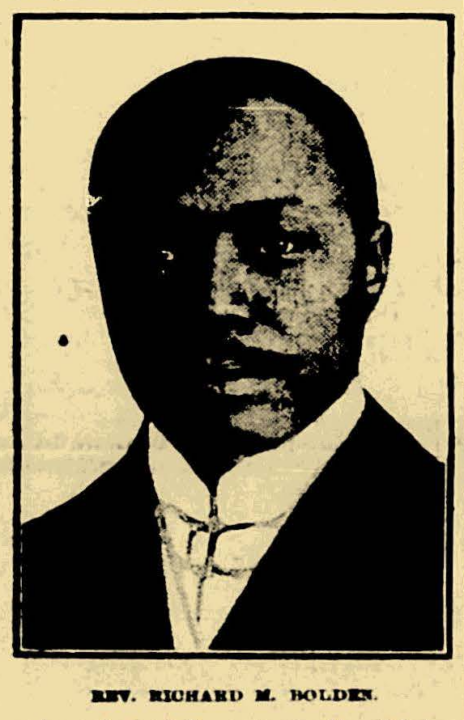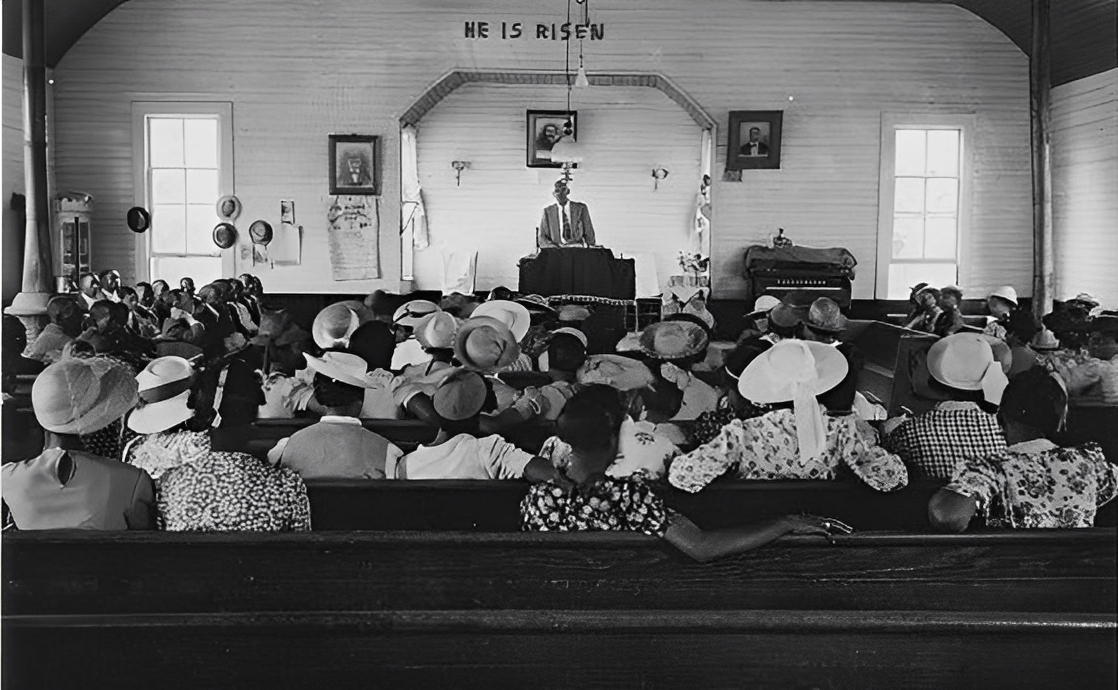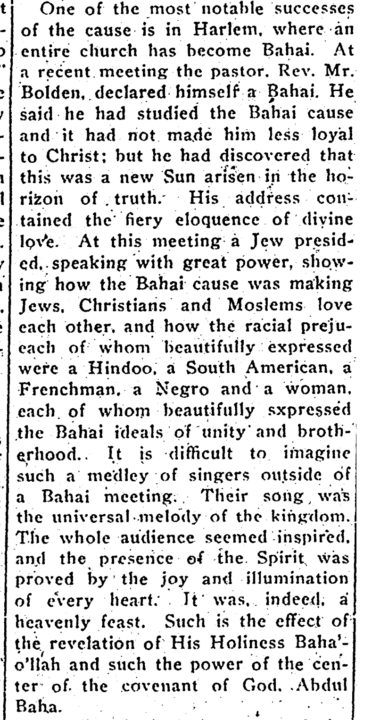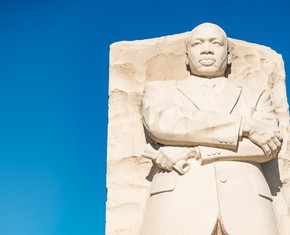The views expressed in our content reflect individual perspectives and do not represent the authoritative views of the Baha'i Faith.
Long before the civil rights movement became widespread in the 1950s and ‘60s, Baha’is in the United States actively worked for human oneness and an end to racism – led by the teachings of Abdu’l-Baha:
… associate in friendship; love one another; abandon prejudices of race; dispel forever this gloomy darkness of human ignorance, for the century of light, the Sun of Reality hath appeared. Now is the time for affiliation, and now is the period of unity and concord. For thousands of years ye have been contending in warfare and strife. It is enough. Now is the time for unity.
More evidence has recently surfaced testifying to this anti-racist Baha’i commitment in the African American newspaper The Washington Bee, which became one of the most influential Black newspapers in America during its heyday in the late 19th and early 20th centuries.
Its original motto was “Sting for Our Enemies—Honey for Our Friends,” an early civil rights slogan. On Saturday, September 18, 1920, a Washington Bee story headlined, “Growing Interest In Bahai Movement,” reported the extraordinary conversion of an entire African American church congregation to the Baha’i Faith — which, at that time, was known as the “Baha’i Movement” or “Baha’i Cause.”
The story recounts, in part:
Abdul Baha, the venerable and majestic figure who from his home on Mount Carmel directs the movement toward the religious unity of the world, is pleased with the activities of his friends, a circle whichever widens. “Think of the world,” he teaches, “as the body of a man sick and infirm from various diseases. Among these diseases are religious, racial and patriotic prejudices. All these diseases must be healed before the patient can recover and human unity be established.”
The Bahai universal principles, foremost among which are the independent investigation of truth and the oneness of the world of humanity, are making an irresistible appeal to all classes of people. …
One of the most notable successes of the cause is in Harlem, where an entire church has become Bahai. At a recent meeting the pastor, Rev. Mr. Bolden, declared himself a Bahai. He said he had studied the Bahai cause and it had not made him less loyal to Christ; but he had discovered that this was a new Sun arisen in the horizon of truth. His address contained the fiery eloquence of divine love. At this meeting a Jew presided, speaking with great power, showing how the Bahai cause was making Jews, Christians and Moslems love each other, and how the racial preju- [sic: words missing] each of whom beautifully expressed [sic] were a Hindoo, a South American, a Frenchman, a Negro and a woman, each of whom beautifully expressed the Bahai ideals of unity and brotherhood. It is difficult to imagine such a medley of singers outside of a Bahai meeting. Their song was the universal melody of the kingdom. The whole audience seemed inspired, and the presence of the Spirit was proved by the joy and illumination of every heart. It was, indeed, a heavenly feast. Such is the effect of the revelation of His Holiness Baha’o’llah [sic] and such the power of the center of the covenant of God, Abdul Baha. – “Growing Interest In Bahai Movement,” The Washington Bee (Washington, DC), Saturday, September 18, 1920, p. 7. https://www.genealogybank.com/newspaper-clippings/bahais-louis-gregory-fazel-mazandarani-william-randal-rev-richard-bolden%E2%80%A6/mnmpuoubuzbntwydznntyunvaprdpoep_wma-gateway016_1672518964106

Some religious boundaries, in those days, were fluid, such that Christians could also identify as Baha’is, without needing to sever their respective church affiliations. The pastor at First Emmanuel, Rev. Richard Manuel Bolden, founded the church in 1913 in Harlem, a neighborhood in the upper section of Manhattan in New York City with a predominantly African American population.
As of late January 1920, the local press had previously announced that: “The Bahai movement will conduct meetings every Sunday afternoon at the church from 3:15 to 4:15 p.m.” How this series of Baha’i meetings came to be hosted by the First Emmanuel Church is not currently known, though perhaps the first Baha’i to speak there was the prominent African American attorney Louis Gregory.
These Baha’i meetings ran through the fall of 1922, and Baha’is were known to be visible in church activities in the later 1920s as well. Very soon two Baha’i meetings were being held at the church – the Baha’i Association, which continued to meet Sunday afternoons, and the Rainbow Circle which met Thursday evenings, often with an inter-cultural dinner featured.
Among the Baha’i texts clearly mentioned for readings at the church was Baha’u’llah’s The Hidden Words and Abdu’l-Baha’s Some Answered Questions. The names of known Baha’is mentioned visiting and giving talks at those meetings, roughly in order of their first appearance are: Louis Gregory, William H. Randall, Fazel Mazandarani, Mary Hanford Ford, and Urbain Ledoux, among several others.
Some 40 individuals are named performing some service during the Baha’i meetings, indicating they identified as Baha’is too – including Pastor Bolden himself. Just one week after The Washington Bee printed their article, another newspaper, The New York Age – which described itself as a “Leading Negro newspaper” – reported that Bolden had received a letter from Abdu’l-Baha himself.
This is strong evidence that Pastor Bolden identified as a Baha’i, since, in those days, those who were drawn to the “Baha’i Movement” and embraced its progressive, universal principles of oneness and social egalitarianism were encouraged to write directly to Abdu’l-Baha to introduce themselves and to express their allegiance. This is almost certainly what must have happened, since Abdu’l-Baha wrote back, since Bolden led several of these explicitly Baha’i meetings across three years, himself read of the aforementioned Texts, and was elected to New York’s Baha’i Local Spiritual Assembly in 1922.
Towards the end of 1920, The New York Age published a follow-up story, titled, “Immanuel [sic: Emmanuel] Choir in Unique Intra-Racial [sic: Inter-Racial] Program,” which read:
An interesting and unusual program was presented on Thursday evening, December 9 by the choir and Rainbow Circle of the First Emmanuel Church, the Rev. Richard M. Bolden, pastor, 105 West 131st street [sic], the concert being a Musical Silhouette, given at the Metropolitan Baptist Church, 128th street [sic] and Seventh avenue [sic], of which Rev. W. W. Brown is pastor. It was denominated an Intra-Racial [sic: Inter-Racial] Recital, several races being represented on the program.
The Rainbow Circle at Emmanuel Church is made up of members of that church and members of the Bahai Movement, and it is an organization which draws no lines of distinction by reason of color or race. Numbers on the program at Metropolitan Church were given by an Osage Indian, an Icelander, an Abyssinian Jew, a Russian and others. Both colored and white were active as directresses, scenery painters, etc.
A goodly audience was present and each number was received with enthusiastic appreciation.
These remarkable episodes, many of which occurred during Abdu’l-Baha’s lifetime (1844–1921), were a result of his profound international and interracial influence, as noted by Cambridge scholar Edward Granville Browne, the only Westerner to meet Baha’u’llah. In his obituary of Abdu’l-Baha, “Sir ’Abdu’l-Bahá ‘Abbas: Died 28th November, 1921,” published in January 1922 in the prestigious Journal of the Royal Asiatic Society of Great Britain and Ireland, Professor Browne wrote:
The death of Abbas Efendi [sic], better known since he succeeded his father, Baha’u’llah, thirty years ago as Abdu’l-Baha, deprives Persia of one of the most notable of her children and the East of a remarkable personality, who has probably exercised a greater influence not only in the Orient but in the Occident than any Asiatic thinker and teacher of recent times. … One of the most notable practical results of the Baha’i ethical teaching in the United States has been, according to the recent testimony of an impartial and qualified observer, the establishment in Baha’i circles in New York of a real fraternity between black and white, and an unprecedented lifting of the “colour bar”, described by the said observer as “almost miraculous.”
On Tuesday, April 30, 1912, during the Fourth Annual Meeting of the National Association For the Advancement of Colored People (NAACP), Abdu’l-Baha, who was the speaker invited by W. E. B. Du Bois, spoke at an informal reception at Hull House that afternoon, saying:
One of the important questions which affect the unity and the solidarity of mankind is the fellowship and equality of the white and colored races. Between these two races certain points of agreement and points of distinction exist which warrant just and mutual consideration. The points of contact are many; for in the material or physical plane of being, both are constituted alike and exist under the same law of growth and bodily development. Furthermore, both live and move in the plane of the senses and are endowed with human intelligence. There are many other mutual qualifications. In this country, the United States of America, patriotism is common to both races; all have equal rights to citizenship, speak one language, receive the blessings of the same civilization, and follow the precepts of the same religion. In fact numerous points of partnership and agreement exist between the two races; whereas the one point of distinction is that of color. Shall this, the least of all distinctions, be allowed to separate you as races and individuals? In physical bodies, in the law of growth, in sense endowment, intelligence, patriotism, language, citizenship, civilization and religion you are one and the same. A single point of distinction exists — that of racial color. God is not pleased with — neither should any reasonable or intelligent man be willing to recognize — inequality in the races because of this distinction. …
Therefore, Baha’u’llah hath said that the various races of humankind lend a composite harmony and beauty of color to the whole. Let all associate, therefore, in this great human garden even as flowers grow and blend together side by side without discord or disagreement between them.


















Comments
Sign in or create an account
Continue with Googleor